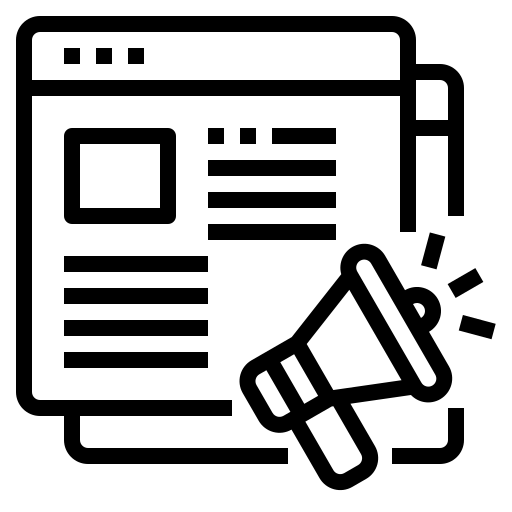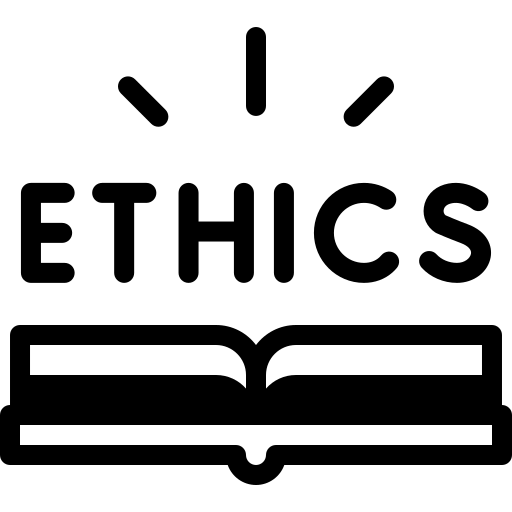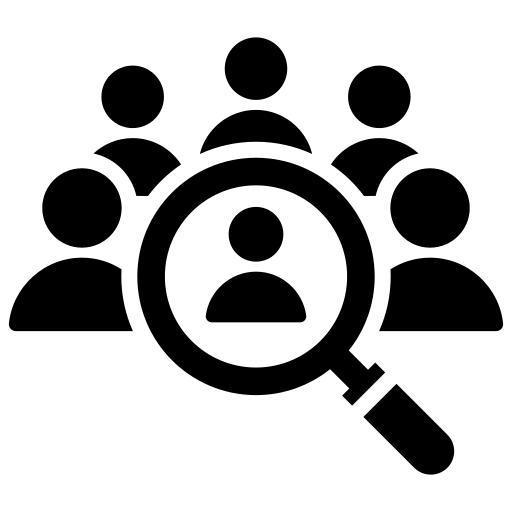Publication Ethics
At Al-Kindi Center for Research and Development, we follow the Recommendations for the Conduct, Reporting, Editing, and Publication of Scholarly works and Best Practice Guidelines for Journal Editors issued by the Committee on Publication Ethics (COPE), thus it is our obligation to ensure that the quality of works we publish meets the standards. Our focus as an academic publisher is to preserve the accuracy, integrity, and completeness of the scholarly record by ensuring that we promote honest and most-accurate publishing through stringent policies. Our team of experienced editors, reviewers, and advisors have sworn to respect and uphold these guidelines.
AUTHORSHIP
What is authorship?
According to COPE, The term authorship can refer to the creator or originator of an idea (eg, the author of the theory of relativity) or the individual or individuals who develop and bring to fruition the product that disseminates intellectual or creative works (eg, the author of a poem or a scholarly article). Authorship conveys significant privileges, responsibilities, and legal rights; in the scholarly arena, it also forms the basis for rewards and career advancement. Various disciplines have norms, guidelines, and rules governing authorship; some of those rules preserve the lineage of ideas or works, conception, and production of studies or experiments to validate the theory, analysis of outcomes, and the actual writing of work to disseminate knowledge. Authors are accountable for following discipline-specific guidelines when they engage in authorship activities; journal editors and publishers are accountable for making author guidelines transparent and appropriate for the medium (scholarly books, journal articles, creative writing). At a minimum, authors should guarantee that they have done the work as presented and that they have not violated any other author’s legal rights (eg, copyright) in the process.
Who are eligible authors?
According to the Journal of Gender, Culture and Society, eligible authors are those with the following roles:
1- Evidence of substantial contribution to the research conception and design, data acquisition, analysis, and interpretation.
2- Drafting or revising the article for intellectual content.
3- Approval of the final version.
4- Agreement to be accountable for all aspects of the work related to the accuracy or integrity of any part of the work.
Other criteria we use to identify eligible authors
1- Level of education: an author who doesn’t have a master's degree and above may not be eligible in publishing research on his/her own. At least a senior scholar such as a professor or senior lecturer with a PhD must be invited to form part of the research and writing process.
2- We don’t allow individuals whose major role in the paper was translation services to be added as co-authors, they can only be acknowledged.
3- Individual whose roles was to provide funding, should not be added to the paper.
4- More than four authors in a paper will have to be vetted to ensure that their contributions in the research were of significant value. We have had experiences with multiple authors added to one research which is less than 4,000 words.
5- The editor-in-chief or associate editors of the journal are not eligible authors. This is because of the fact that they are likely to be affected by various aspects of conflicts of interest.
Authorship terms and agreement
1- All named authors sign a statement of authorship as a condition of publication.
2- A declaration that that person, and all other named authors, fulfill the authorship criteria laid out in the journal’s authorship policy.
3- A declaration that no other individuals deserving of authorship have been omitted.
4- A statement of what exactly that person contributed to the paper (journals should also consider publishing this information).
5- A declaration that a person takes responsibility for the integrity of the paper
Guidelines on solving authorship disputes
1- The position of the author in a paper should be decided upon by the authors before submitting the paper for consideration for publishing. We shall consider publishing the paper in the order in which the names of the authors are received.
2- Additional authors cannot be added after submission.
3- Authors cannot be replaced in cases of sickness, insanity, or death.
COMPETING INTERESTS
The Journal of Gender, Culture and Society has a transparent publication policy and adheres in principle to the Conflict of Interest policy recommended by the COPE. We require that authors, editors, and reviewers declare any relevant competing interests of a personal, professional, or financial nature at the time of submission (for authors) or acceptance to evaluate a manuscript (for editors and reviewers)- for example, financial or personal relationships with other people or organizations that could inappropriately influence or bias their work, or could be perceived to do so.
It is the responsibility of authors to disclose affiliations with any organization with a financial interest, direct or indirect, in the subject matter or materials discussed in the manuscript (such as consultancies, employment, paid expert testimony, honoraria, speakers bureaus, retainers, stock options or ownership, patents or patent applications or travel grants). All sources of funding for research should be explicitly stated. If uncertain as to what might be considered a potential competing interest, authors should err on the side of full disclosure.
Instances of conflict of interest that must be stated are as follows:
1- Whether the editor of the journal is a relative or family member.
2- Whether you work with the journal or the publisher in any position.
3- Whether you received a research grant or financial support from an internal or external source.
Ethics and consent
All research articles we publish are subject to a rigorous ethical standards. The journal endorses the Code of Conduct of the Committee on Publication Ethics (COPE), as well as the COPE International Standards for Editors and Authors Guidelines. The Editorial Board of each journal is responsible for the form the peer review process will take; therefore, all authors in the biomedical field must adhere to the Uniform Requirements for Manuscripts Submitted to Biomedical Journals. Al-Kindi Center for Research and Development endorses the World Association of Medical Editors (WAME) Policy Statement on Geopolitical Intrusion on Editorial Decisions, too.
PLAGIARISM AND OTHER FORMS OF ACADEMIC MALPRACTICE?
Academic dishonesty, fraud or academic misconduct is any type of cheating that occurs in relation to a formal academic exercise. It can include plagiarism, coercive authorship; article publishing gift or honorary authorship.
1- Plagiarism and Self-citation
Plagiarism is the adoption or reproduction of ideas or words or statements of another person without due acknowledgement. This may also include the inability to cite properly or little understanding of Citation Style Languages. A self-citation is a reference to an article by the same author either from the same journal or from other journals.
Plagiarism may vary depending on the level of severity. These are some of the levels at which a work may be plagiarized:
Coercive Translation
This involves the translation of other people’s works into other languages and then personalising it without acknowledging the owner.
How to avoid this:
1- Get consent before you translate other people’s works.
2- Give credit to the rightful owner of the work.
3- Read widely on best practices in the translation of published works.
Substantial and Literal Copying
Reproducing a work word for word, in whole or in part, without permission and acknowledgement of the original source.
Implication on research output
It may compromise the research through replication hence no new/significant contribution to the existing literature.
Implication on the author
It may destroy your reputation as a scholar.
How to avoid:
1- Read widely on various resources on best practices in research and publishing.
2- Keep clear records of the sources you use while researching and writing.
3- Ensure that you use quotation marks around borrowed lines, sentences and paragraphs, and cite properly by acknowledging the sources you reference.
Paraphrasing
It may be divided into two groups: sham paraphrasing and illicit paraphrasing.
- Sham paraphrasing
Material copied verbatim from text and source acknowledged but represented as paraphrased.
- Illicit paraphrasing
Material paraphrased from text without acknowledgement of the original source.
Implication on research output
It may compromise the research through replication hence no new/significant contribution to the existing literature.
Implication on the author
It may destroy your reputation as a scholar.
How to avoid:
1- Read widely on various resources on best practices in research and publishing
2- Make sure that you understand the work in context, then read the author’s intention before you paraphrase.
3- Avoid copy-pasting words that you do not fully understand.
4- Read widely on paraphrasing as best practices in academic publishing.
5- Compare the facts between the original authors and your own to determine whether you are on the right track
6- Do not distort any idea or concept of the original author.
Self-citation or Text-recycling
Reproducing portions of an author's own work in a paper, and resubmitting it for publication as an entirely new paper.
Implication on research output
It may destroy your reputation as a scholar.
How to avoid:
1- Put anything in quotes that are taken directly from a previously published paper, even if you are reusing something in your own words.
2- Make sure to reference the source accordingly
At Al-Kindi Center for Research and Development, articles with more than 10% plagiarized sources are rejected at the submission stage while self-cited sources denoting similar research are treated as duplicate research. Duplicate articles are those with more than 10% self-citations. We reject them at the submission stage.
2- Coercive authorship; article publishing gift or honorary authorship
Coercive or abusive or promiscuous authorship assumes many forms. “Coercive authorship” is defined as authorship conferred to individuals in response to their exertion of seniority or supervisory status over subordinates and junior researchers or investigators. In simple form, this is the act of awarding authorship to someone who has not contributed to the manuscript in an intellectually significant manner.
At Al-Kindi Center for Research and Development, co-authored works are attributed based on the individual author’s contributions or responsibilities or roles in the research and writing process.
3- Academic advantage or article laundering
This is the act of acquiring from a third party or contracting ghostwriters to write articles and then later publish under your own.
At Al-Kindi Center for Research and Development, we are capable of detecting ownership of the research based on article-level communication strategies. Such articles are rejected during the peer-review process.
4- Editorial misconduct
This form of practice often occurs when a member of the editorial board of a given journal is paid an unofficial fee to sneak in an unsolicited article for personal gains such as promotion, grant application, or coercive professional growth.
At Al-Kindi Center for Research and Development, after investigation, services from such editors are discontinued at our sole discretion. Our editors do not negotiate on the APCs of the journal. Articles aren’t submitted through editors because the author’s identities should remain unknown at the submission stage unless otherwise.


 Aims & scope
Aims & scope Call for Papers
Call for Papers Article Processing Charges
Article Processing Charges Publications Ethics
Publications Ethics Google Scholar Citations
Google Scholar Citations Recruitment
Recruitment